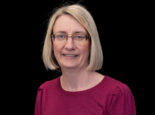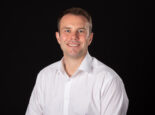Fighting cancer in the workplace
[prev] …been falling since the 1980s. 2011 figures show the number of deaths to be 11,762, with a fall of 45% for women aged 50-64 since 1989. ‘We are doing well in terms of breast cancer treatment – not just because of national screening programmes and having specialist breast units, but also because of better education and people being more breast aware – factors that empower individuals to better manage their own breast health.’
Twenty five per cent of all cancers present in A&E – a sign that some early symptoms are still being ignored or are going unrecognised
As with all forms of cancer, being able to recognise it and catch it early is key to survival. At the other end of the scale is lung cancer. ‘90% of lung cancers come to light as a result of symptoms such as weight loss, or a cough – perhaps coughing up blood. By the time that happens, however, it is already too late for surgery or other curative treatments.’ 25% of all cancers, in fact, present in A&E – a sign that some early symptoms are still being ignored or are going unrecognised. The prognosis for these people is not good. ‘41,428 new cases of lung cancer were diagnosed in the UK in 2009,’ says Gordon Wishart, ‘a slightly lower incidence than breast cancer – but by comparison the number of deaths is huge: 34,859 in the UK in 2010.’ The issue here is detecting the disease too late. As with several of the most widespread cancers, there is no national screening programme.
There is, however, a new blood test, not yet routinely available via the NHS, but being used by HSUK in its corporate screening programmes and currently being piloted by NHS Scotland. ‘It’s called Early CDTLung and it detects seven antibodies made by the body in response to lung cancer, and which start rising very early in the natural history of that illness.’ For many, this could literally mean the difference between life and death. This and other early detection methods that HSUK employ offer a real possibility of raising the survival rates of these more deadly cancers to that of breast cancer.
Just six cancers account for about 85% of the total: breast, bowel, lung, skin, prostate and cervical cancer
So, how does it work? While there are many different types of cancer, just six account for about 85% of the total: breast, bowel, lung, skin, prostate and cervical cancer – and these are the six cancers that HealthScreen UK targets when offering educational and screening services for businesses and organisations. These are flexible and can be scaled to the needs of the company.
‘At the outset it’s about education and awareness of certain cancers, and this is something that we do through oral presentations in the workplace, dedicated websites, brochures, posters and so on. They’re all designed to make people aware of what they should know about that cancer – how common that cancer is, what the risk factors are, ways of reducing risk, symptoms to look out for and what you should do if you think you have any of them. That’s the first level.’ The next level is for the organisation to offer some kind of early detection programme. ‘That would normally be for a specific cancer – so, for example, if the company has a high proportion of men, they might ask for an early detection programme for prostate cancer. All our programmes have the same… [cont]















